Military
The Helicopter War: A Look at the Iconic Helicopters That Defined the Vietnam War

Published:

Fifty-three years ago on a hot and humid summer day in South Vietnam, four U.S. UH-1 “Huey” helicopters were flying cover for a dangerous rescue mission. The dense jungle hid the enemy threat below as the helicopters ventured low above the treetops. Hit by enemy fire coming from somewhere below the marshy growth, one helicopter suddenly caught fire and crashed, killing two men instantly and wounding two others. On June 10, 1971, Specialist 5 Johnny Arthur and Specialist 4 Louie Montoya lost their lives in the crash while the pilot and copilot, First Lieutenant Robert Goolsby and Warrant Officer Steve Watson, would go on to survive the war. Despite the danger of flying helicopters low over heavy tree cover, they were widely used in the Vietnam War due to the rough terrain and extreme difficulty of traveling easily on treacherous ground.
Helicopters were in use during World War II, but only on a small-scale level. During the Korean War, they began to be used more widely though mainly for medical evacuations, logistical support, and transportation. But it would be the Vietnam War, sometimes called the “Helicopter War,” when helicopters became major players in the conflict, getting involved in every aspect including scouting, equipment hauling, search and rescue, utility, and most significantly, for attack. Some of these helicopters are still operational today.
24/7 Wall St. has put together a list of the iconic helicopters that shaped the Vietnam War. We got our data from a catalog of helicopters from Military Factory. Our list is ranked chronologically by when the helicopter first entered service. We’ve also included data on the type of helicopter, armament, year introduced, manufacturer, top speed, number of units manufactured, and which side used them.
Making its debut in 1959, the Bell UH-1 Iroquois (Huey), which is still in use today, is perhaps the most famous helicopter of the Vietnam War. A particularly adaptable helicopter, its use spanned roles such as transport, medevac, search and rescue, and in some cases an attack helicopter. More than 5,000 Hueys were introduced to the war and it is estimated that more than 2,500 were lost in the conflict. (These are the most widely used combat helicopters in the world.)
The UH-1 Iroquois was replaced by the Bell AH-1 Cobra in August 1967, with the AH-1 acting as a dedicated attack helicopter. The AH-1 primarily acted as an escort for air cavalry birds or close-air support during the Vietnam War, in addition to its attack helicopter role, and is still in use today with an expanded series of roles. The Iroquois has 7.62mm miniguns or 40mm M129 grenade launchers as its standard armament, with the optional capabilities for more grenade launchers, miniguns, or rocket pods. It is estimated that about 300 Cobras were lost throughout the war out of the 1,000 or so that had been built at that time.
Although helicopters were used extensively by the U.S. throughout the war, they weren’t used as frequently by the North Vietnamese. One of the few to see action was the Mi-8 Hip, which acted as a transport helicopter and as fire support but it entered the conflict too late to be used in many battles in South Vietnam. The North Vietnamese would later put it to use in subsequent campaigns against Cambodia, Laos, and China. (These are the 27 warplanes in Russia’s Air Force.)
Here are the helicopters used in the Vietnam War.

The deadly and prolonged conflict in Vietnam had lasting consequences on the world today. The war deeply split the American public between anti-war protestors and those who believed the war was an important fight against communism. Understanding how the war was fought helps us understand these issues.
The Bell H-13 Sioux (used by the U.S.) was a light utility/observation helicopter introduced in 1947 with 2,400 total units produced. Manufactured by Bell Helicopter Textron, it was usually outfitted with no armament, but some had air-to-surface anti-tank missiles and .30 caliber medium machine guns. The aircraft could reach a top speed of 106 miles per hour.
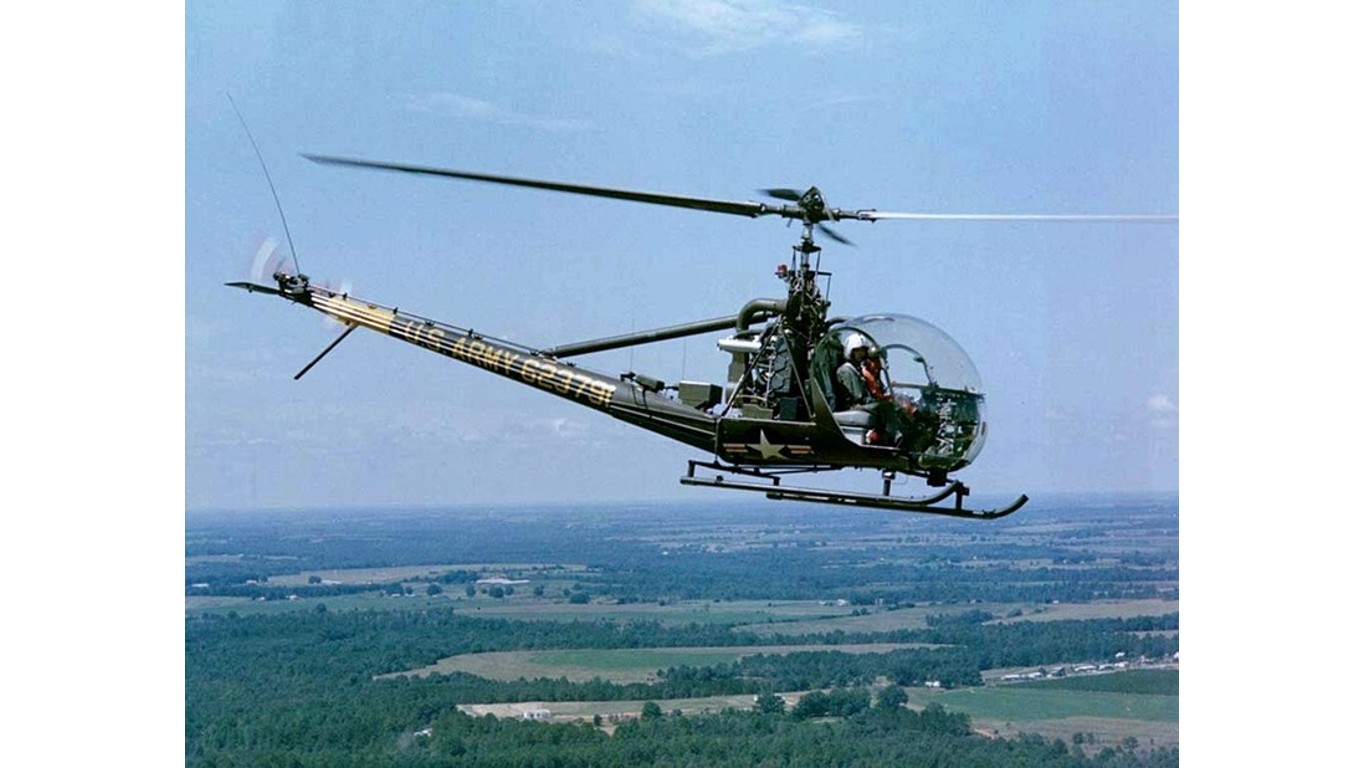
The Hiller OH-23 Raven/Model UH-12 (used by the U.S.) was a light utility helicopter introduced in 1948 with 1,820 total units produced. Manufactured by Hiller Aircraft, it was usually outfitted with no armament, but some had 7.62mm medium machine guns. The aircraft could reach a top speed of 95 miles per hour.

The Mil Mi-1/Hare (used by North Vietnam) was a light utility/liaison helicopter introduced in 1950 with 2,600 total units produced. Manufactured by Mil Moscow Helicopter Plant, it was outfitted with no armament. The aircraft could reach a top speed of 115 miles per hour.
The Sikorsky H-19 Chickasaw (used by the U.S.) was a multi-role transport utility helicopter introduced in 1950 with 1,728 total units produced. Manufactured by Sikorsky Aircraft, it was usually outfitted without armament. However, this was optional if the mission dictated (typically medium/heavy machine guns or rocket pods.) The aircraft could reach a top speed of 101 miles per hour.
The Mil Mi-4/Hound (used by North Vietnam) was a utility helicopter introduced in 1953 with 4,500 total units produced. Manufactured by Mil Moscow Helicopter Plant, it was outfitted with rocket pods or conventional drop bombs. The aircraft could reach a top speed of 115 miles per hour.
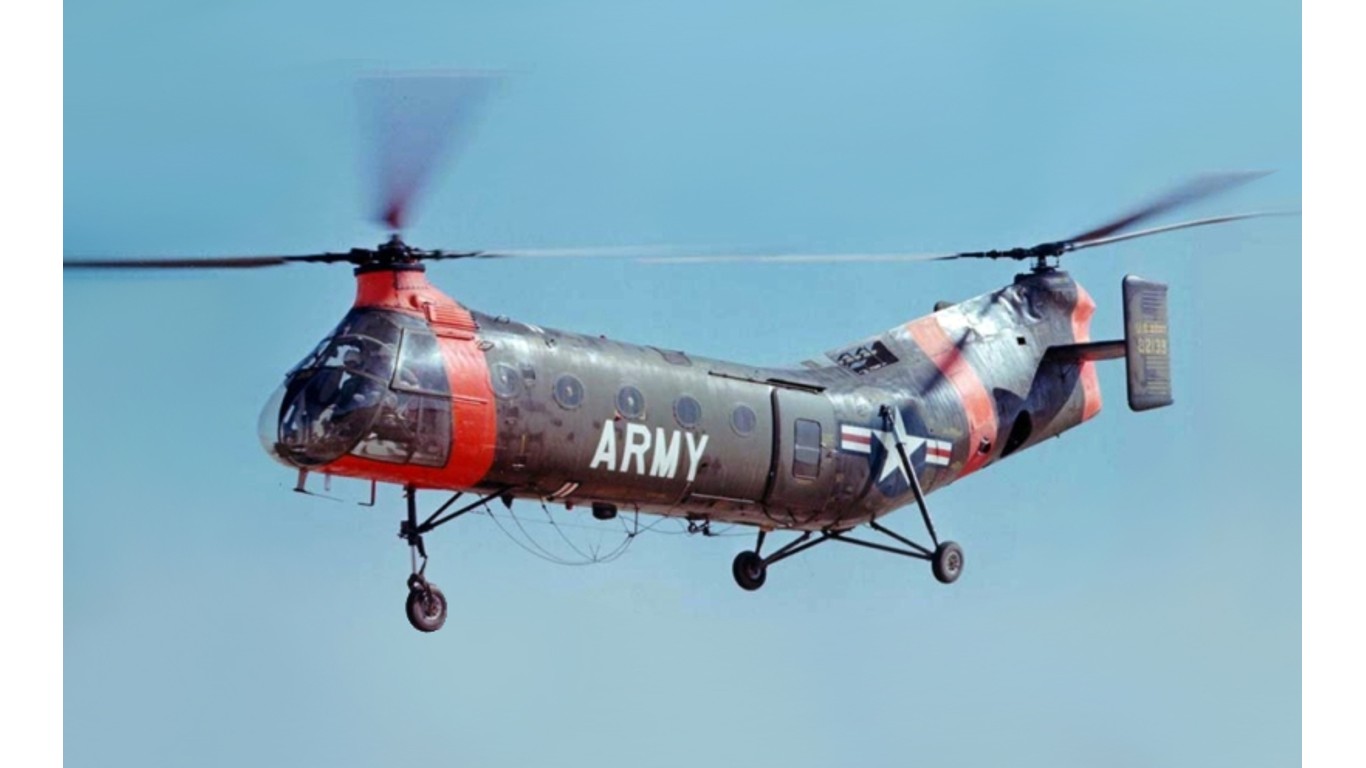
The Piasecki H-21 Workhorse (used by the U.S.) was a cargo/passenger transport tandem-rotor helicopter introduced in 1953 with 500 total units produced. Manufactured by Piasecki Helicopter/Boeing Vertol, it was outfitted with a cargo/passenger transport tandem-rotor helicopter. The aircraft could reach a top speed of 127 miles per hour.
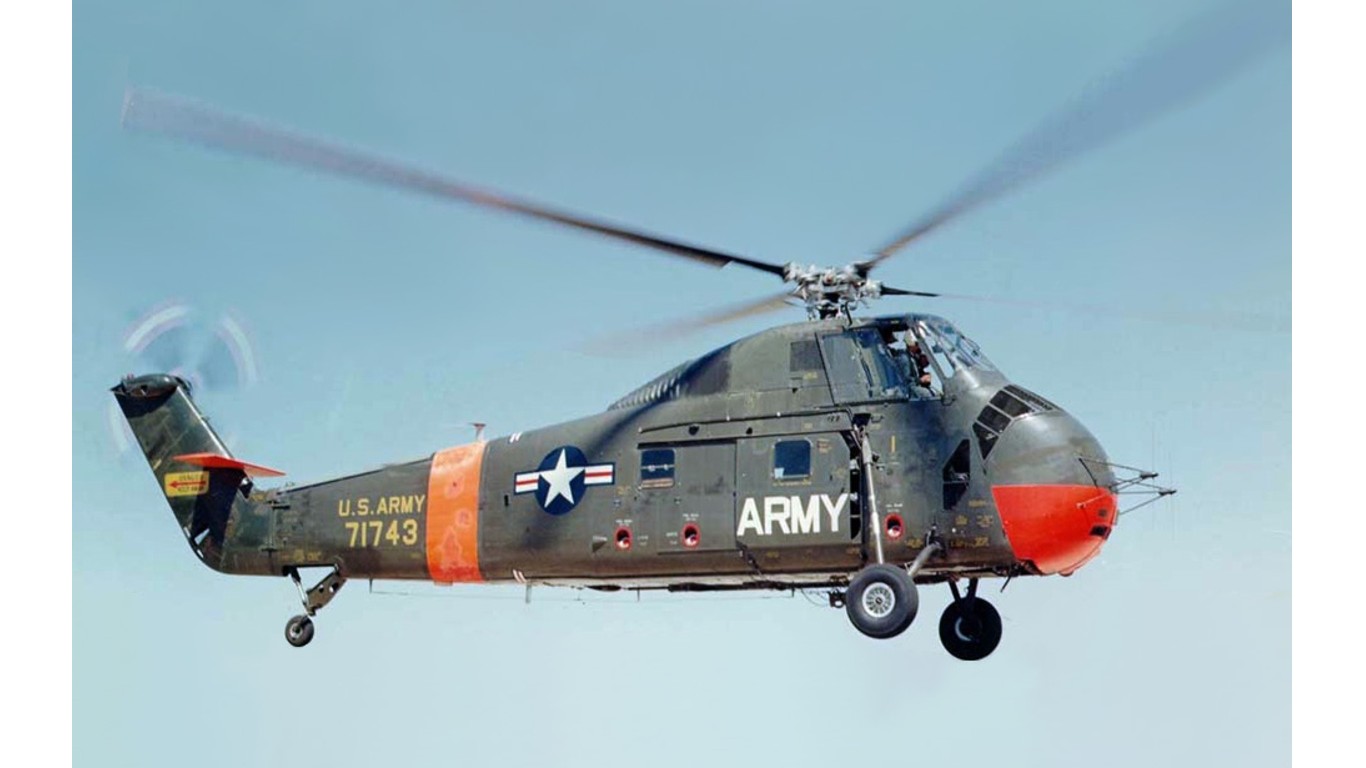
The Sikorsky H-34 / CH-34 Choctaw (used by the U.S.) was a transport/close-support helicopter introduced in 1954 with 1,800 total units produced. Manufactured by Sikorsky Aircraft, it was outfitted with 7.62mm general purpose machine guns and 18-tube 2.75″ rocket launchers. The aircraft could reach a top speed of 173 miles per hour.
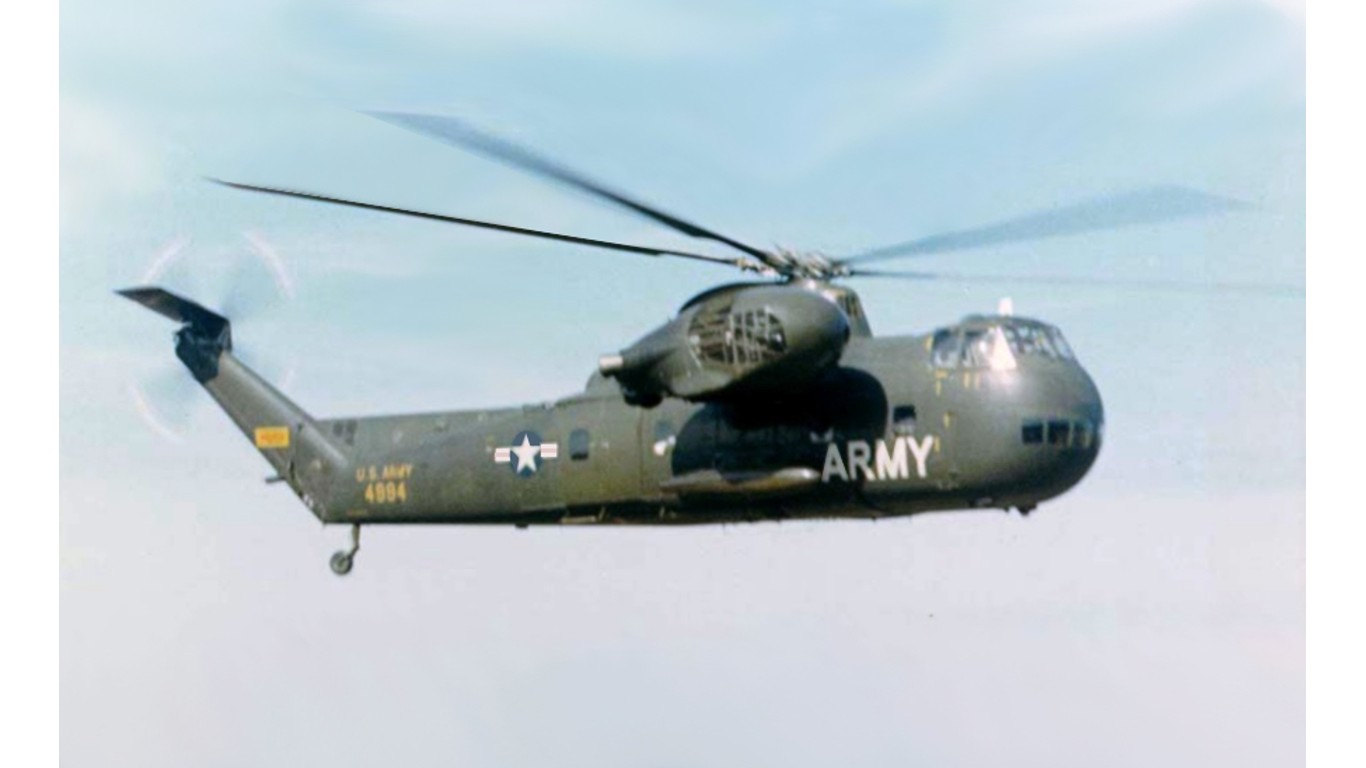
The Sikorsky CH-37 Mojave (used by the U.S.) was a heavy-lift cargo/transport helicopter introduced in 1956 with 154 total units produced. Manufactured by Sikorsky Aircraft, it was not outfitted with armament. The aircraft could reach a top speed of 130 miles per hour.

The Kaman HH-43 Huskie (used by the U.S.) was a light utility/rescue helicopter introduced in 1958 with 330 total units produced. Manufactured by Kaman Aircraft, it was not outfitted with armament. The aircraft could reach a top speed of 118 miles per hour.
The Bell UH-1 Iroquois/Huey (used by the U.S.) was a utility/attack/transport helicopter introduced in 1959 with 16,500 total units produced. Manufactured by Bell Helicopter, it was outfitted with 7.62mm general purpose machine guns, 12.7mm heavy machine guns, 7.62mm GAU-17/A miniguns, and MK 44/46, 2.75″ 7- or 19-tube rocket pods. The aircraft could reach a top speed of 137 miles per hour.
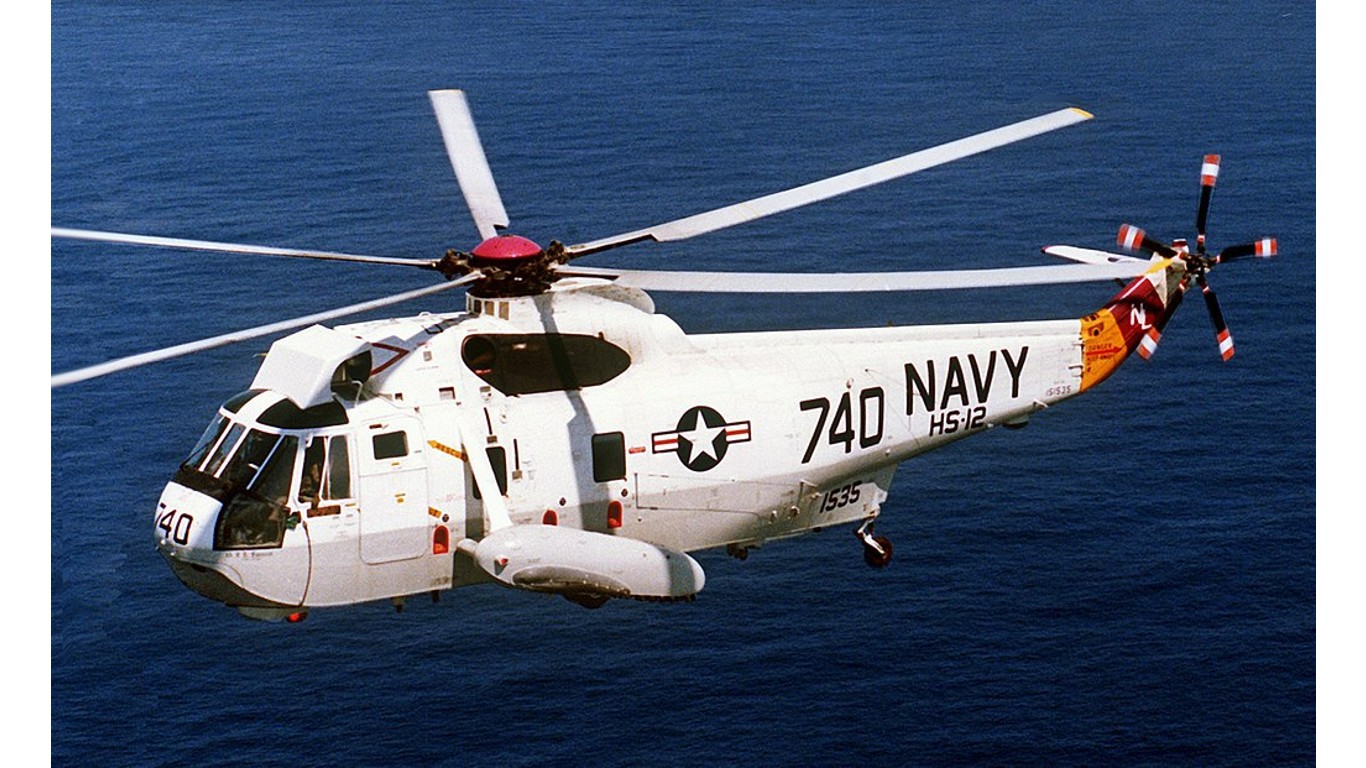
The Sikorsky SH-3 Sea King (used by the U.S.) was a ship-based anti-submarine warfare helicopter introduced in 1961 with 1,100 total units produced. Manufactured by Sikorsky Aircraft, it was outfitted with mark 44/46 torpedoes, anti-ship missiles, naval depth charges, and 7.62mm machine guns. The aircraft could reach a top speed of 166 miles per hour.
The Bell UH-1B/C Huey Cobra/Frog (used by the U.S.) was a gunship helicopter introduced in 1962 with 1,000 total units produced. Manufactured by Bell Helicopter Textron, it was outfitted with 2.75″ seven-shot rocket pods, 24-shot tube “box” kits, 40mm automatic grenade launcher, and .30 caliber machine guns. The aircraft could reach a top speed of 95 miles per hour.
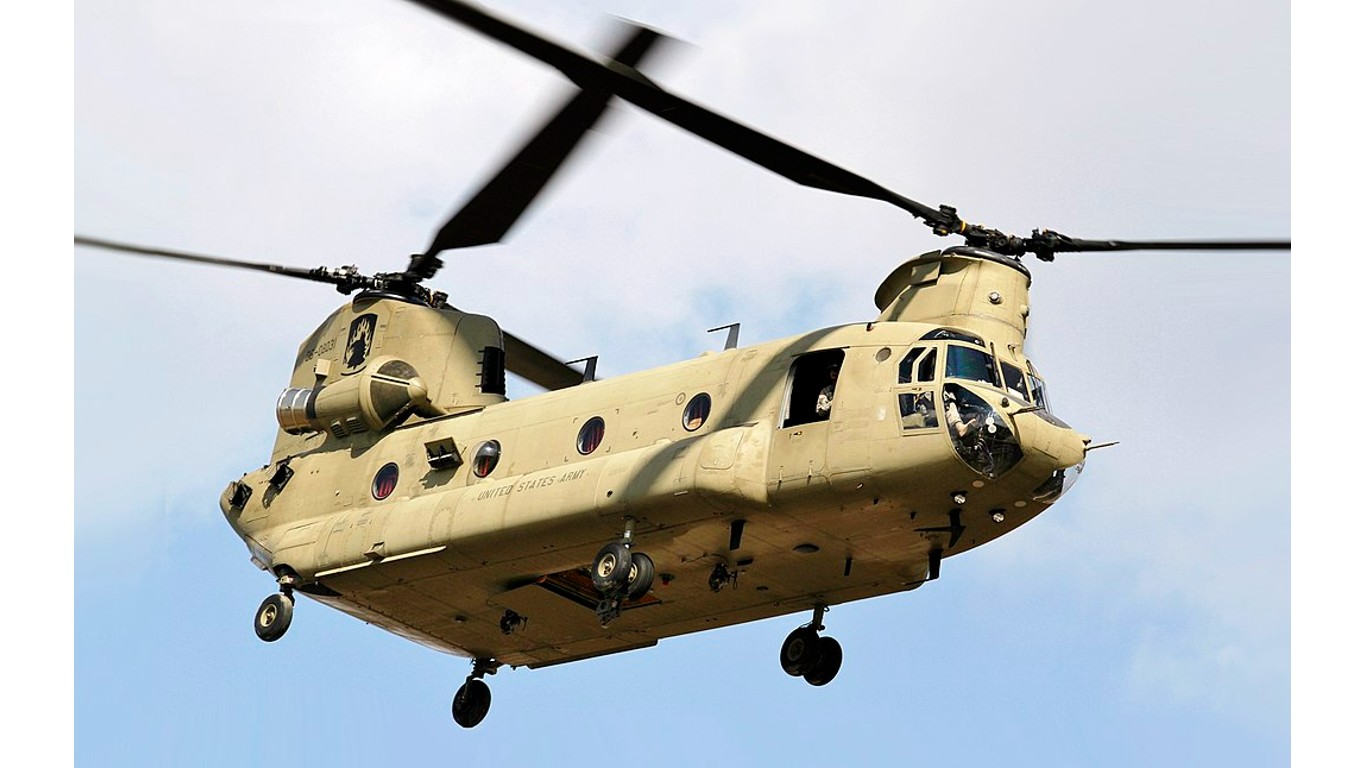
The Boeing CH-47 Chinook (used by the U.S.) was a medium-lift, tandem-rotor transport helicopter introduced in 1962 with 1,200 total units produced. Manufactured by Boeing, it was outfitted with 7.62mm general-purpose machine guns while some models were outfitted with napalm or other drop ordnance. The aircraft could reach a top speed of 180 miles per hour.
The Kaman SH-2 Seasprite / Super Seasprite (used by the U.S.) was a ship-based anti-submarine warfare helicopter introduced in 1962 with 200 total units produced. Manufactured by Kaman Aircraft, it was outfitted with MK 46 torpedoes, MK 50 torpedoes, anti-ship missiles, AGM-65 Maverick air-to-surface missile, and a minigun in powered chin mount. The aircraft could reach a top speed of 159 miles per hour.
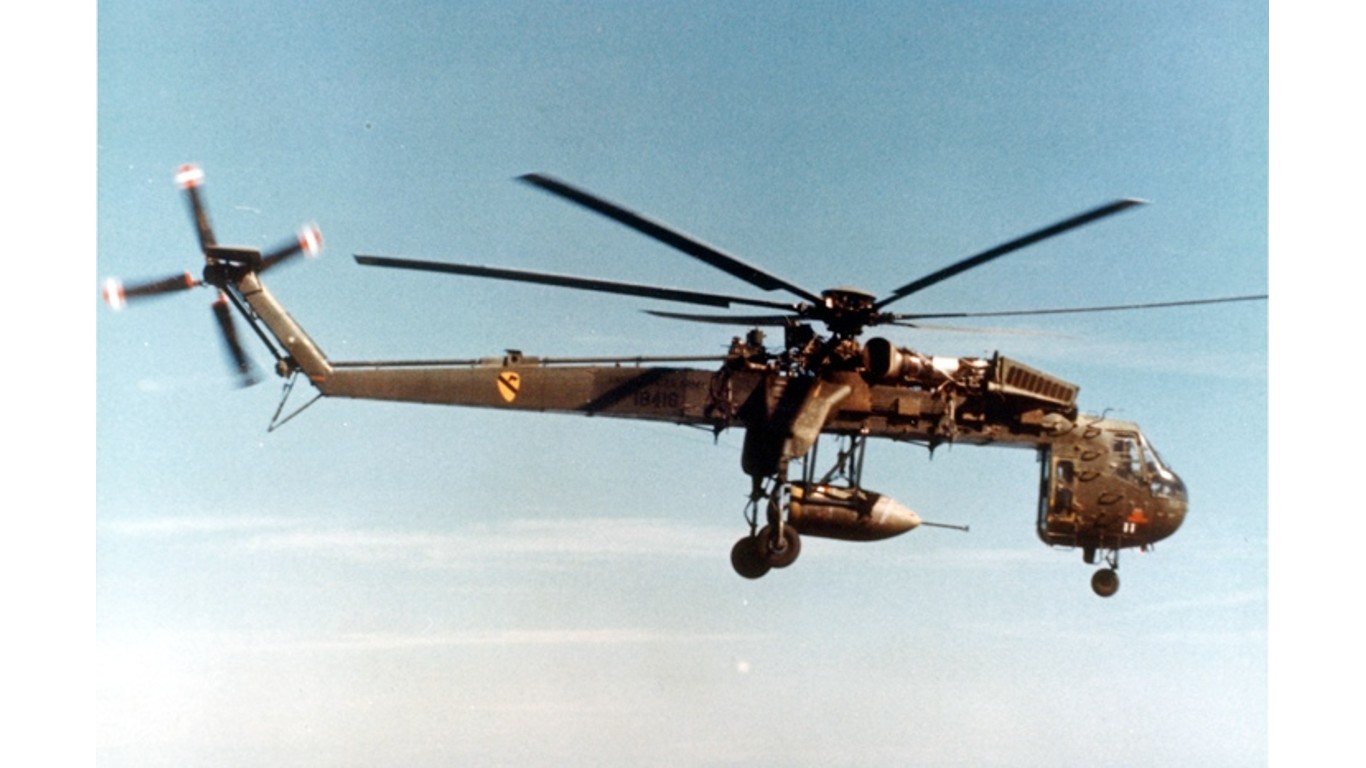
The Sikorsky CH-54 Tarhe / Erickson S-64 Skycrane (used by the U.S.) was a heavy-lift cargo/firefighting helicopter introduced in 1962 with 215 total units produced. Manufactured by Sikorsky Aircraft, it was not outfitted with armament. The aircraft could reach a top speed of 149 miles per hour.
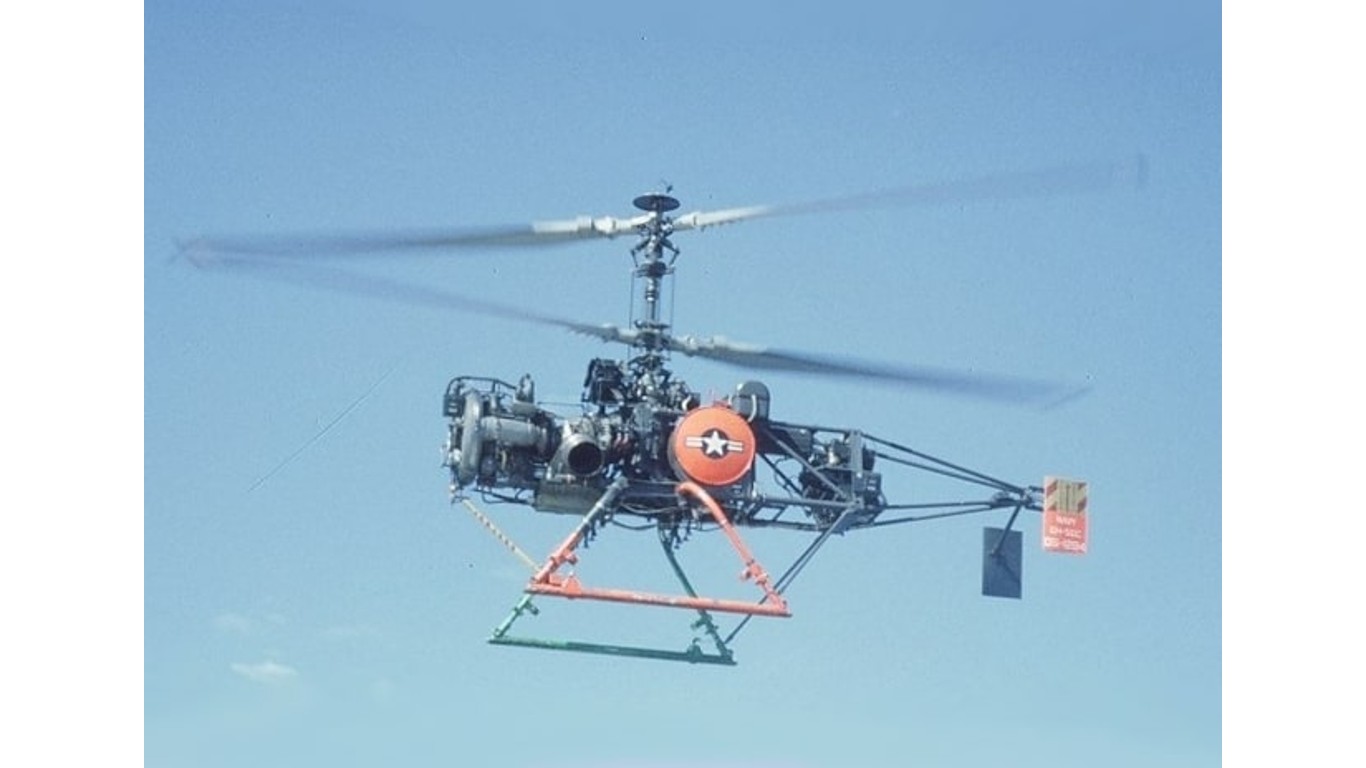
The Gyrodyne QH-50 DASH (used by the U.S.) was a drone anti-submarine helicopter introduced in 1963 with 755 total units produced. Manufactured by Gyrodyne, it was outfitted with MK 44/46 series torpedoes. The aircraft could reach a top speed of 92 miles per hour.

The Boeing Vertol CH-46 Sea Knight (used by the U.S.) was a medium-lift, tandem-rotor transport helicopter introduced in 1964 with 524 total units produced. Manufactured by Boeing Vertol, it was not outfitted with armament. The aircraft could reach a top speed of 166 miles per hour.
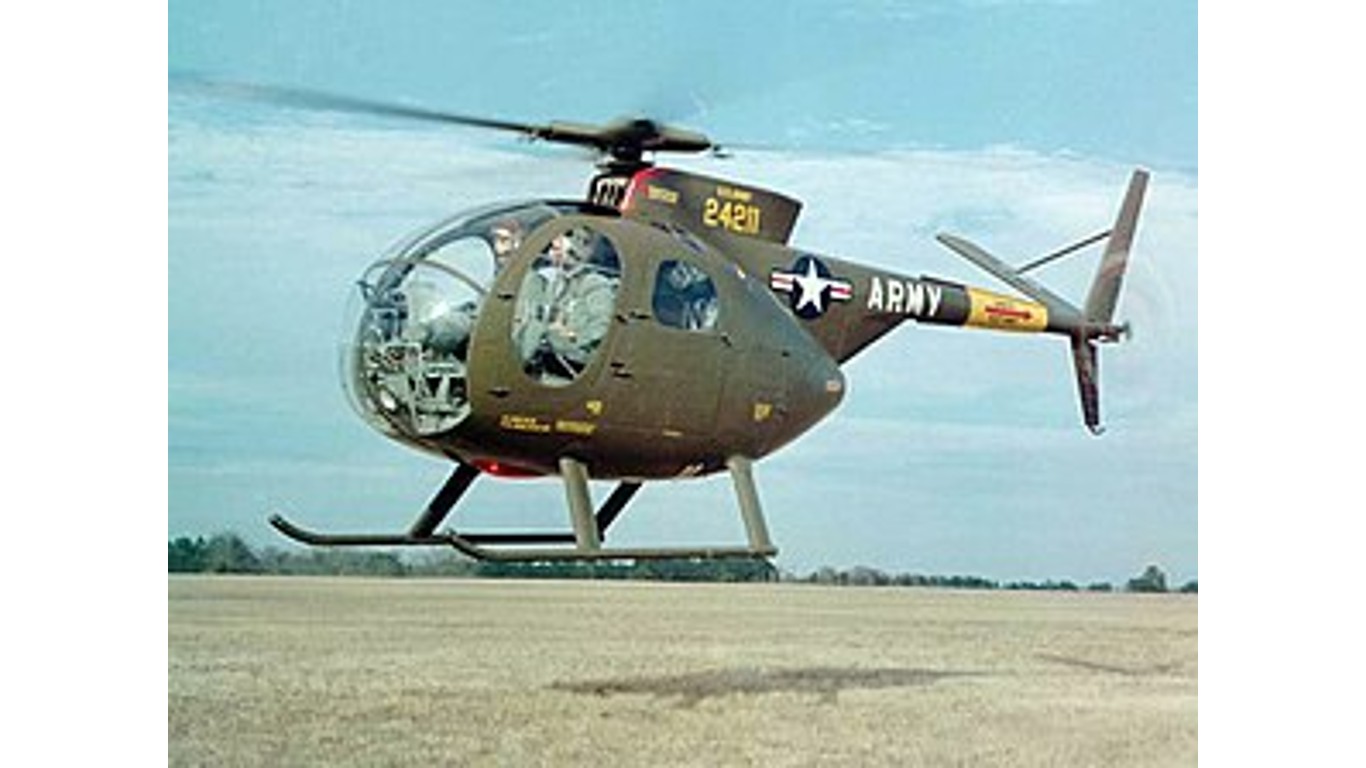
The Hughes OH-6 Cayuse/Loach (used by the U.S.) was a light observation/attack helicopter introduced in 1966 with 1,434 total units produced. Manufactured by Hughes Tool Company, it was outfitted with a 7.62mm M60 general purpose machine gun, 7.62mm M134 minigun pod, 12.7mm M2 Browning heavy machine gun pod, 2.75″ Hydra 70 rocket pod, TOW anti-tank guided missile pod, and an AGM-114 Hellfire anti-tank missile pod. The aircraft could reach a top speed of 175 miles per hour.
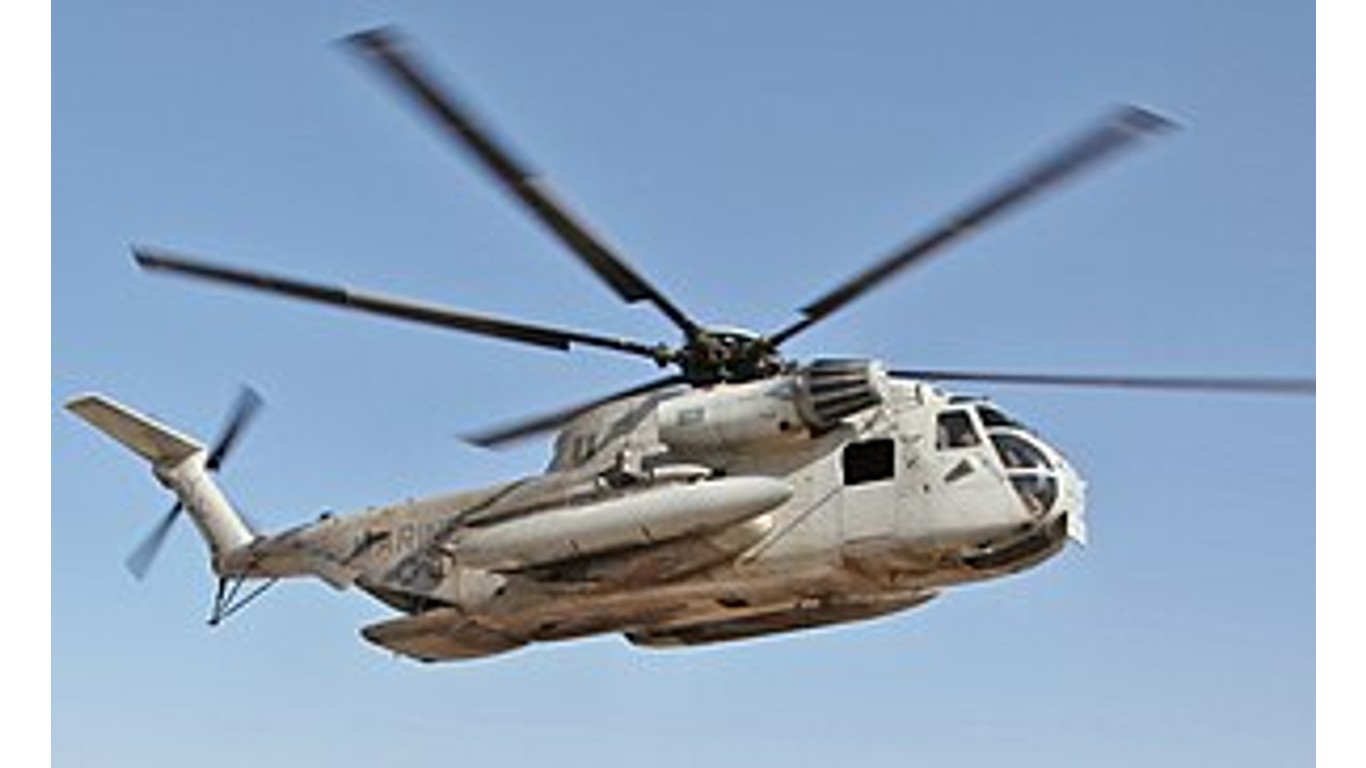
The Sikorsky CH-53 Sea Stallion (used by the U.S.) was a heavy-lift transport helicopter introduced in 1966 with 417 total units produced. Manufactured by Sikorsky Aircraft, it was outfitted with 12.7mm BMG XM218 machine guns and 12.7mm BMG GAU-21 machine guns. The aircraft could reach a top speed of 196 miles per hour.
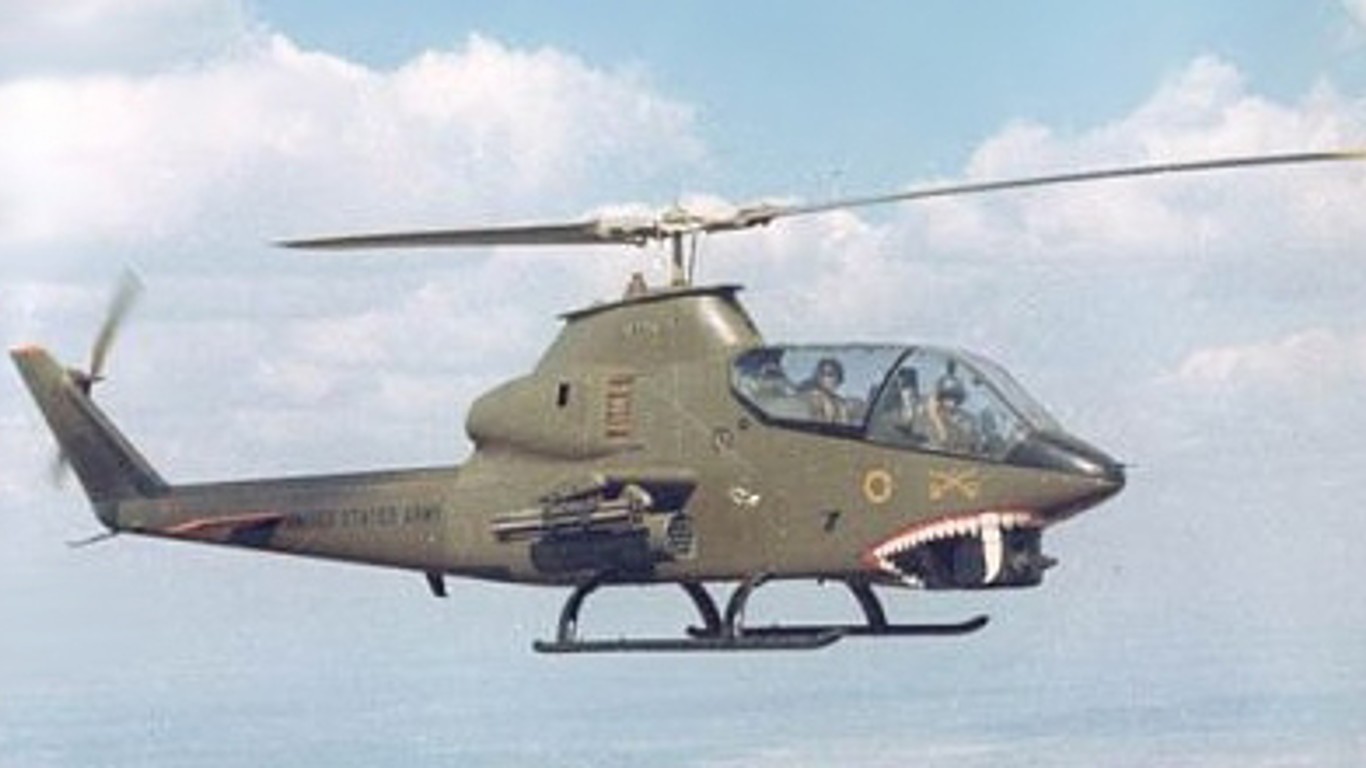
The Bell AH-1 Huey Cobra (used by the U.S.) was a dedicated two-seat attack helicopter introduced in 1967 with 1,116 total units produced. Manufactured by Bell Helicopter Textron, it was outfitted with 7.62mm miniguns, 40mm M129 grenade launcher, and 2.75″ rocket pods. The aircraft could reach a top speed of 172 miles per hour.

The Bell Model 206/JetRanger/LongRanger (used by the U.S.) was a light utility helicopter introduced in 1967 with 7,300 total units produced. Manufactured by Bell Helicopter Textron, it was outfitted with 7.62mm miniguns. The aircraft could reach a top speed of 122 miles per hour.
The Mil Mi-8/Hip (used by North Vietnam) was a medium-lift helicopter introduced in 1967 with 12,500 total units produced. Manufactured by Mil Moscow Helicopter Plant, it was outfitted with UV-16-57 rocket pods, UV-32-57 rocket pods, AT-2 “Swatter” anti-tank missiles, AT-3 “Sagger” anti-tank missiles, 9M17 Phalanga anti-tank missiles, KV-4 12.7mm machine gun, mine dispensers, drop bombs, and PK machine guns. The aircraft could reach a top speed of 162 miles per hour.
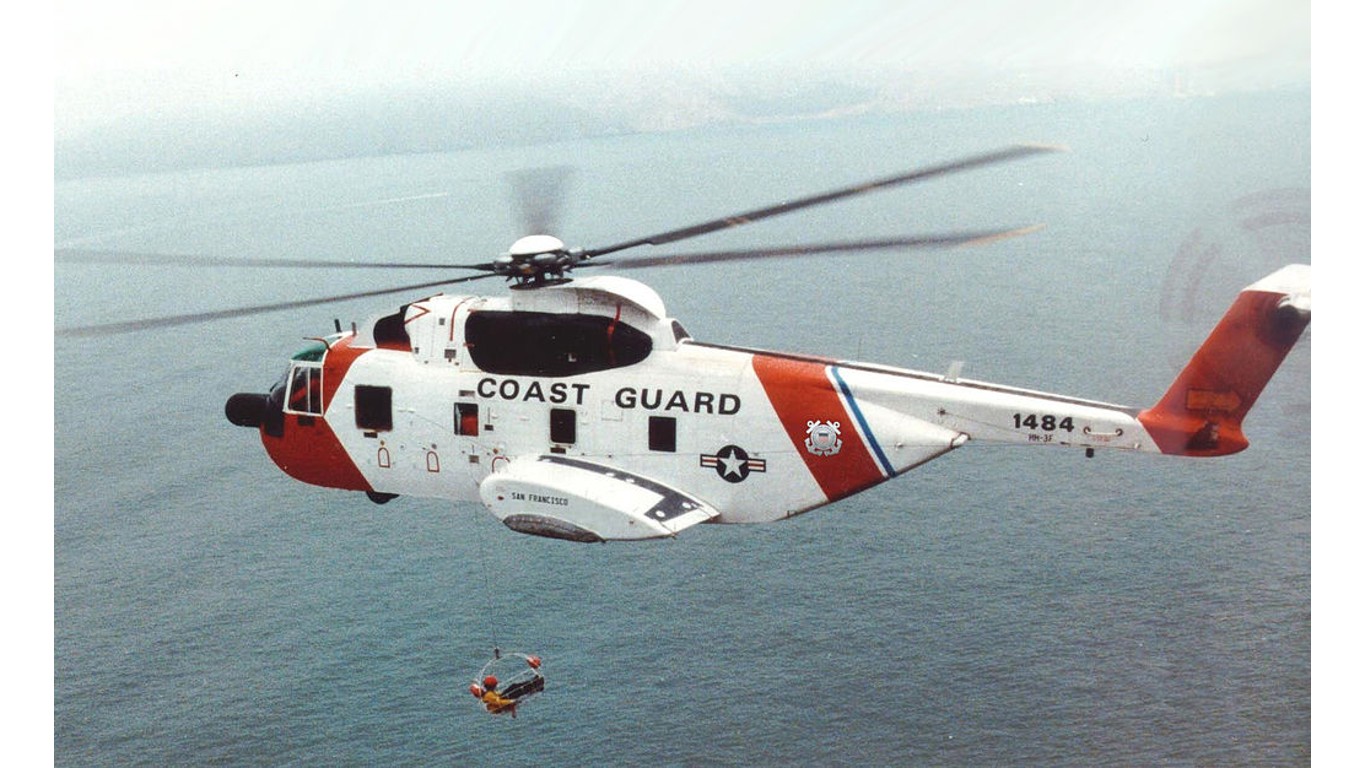
The Sikorsky HH-3E Jolly Green Giant (used by the U.S.) was a search and rescue helicopter introduced in 1967 with 50 total units produced. Manufactured by Sikorsky Aircraft, it was outfitted with 2 x 7.62mm M60 general purpose machine guns. The aircraft could reach a top speed of 153 miles per hour.
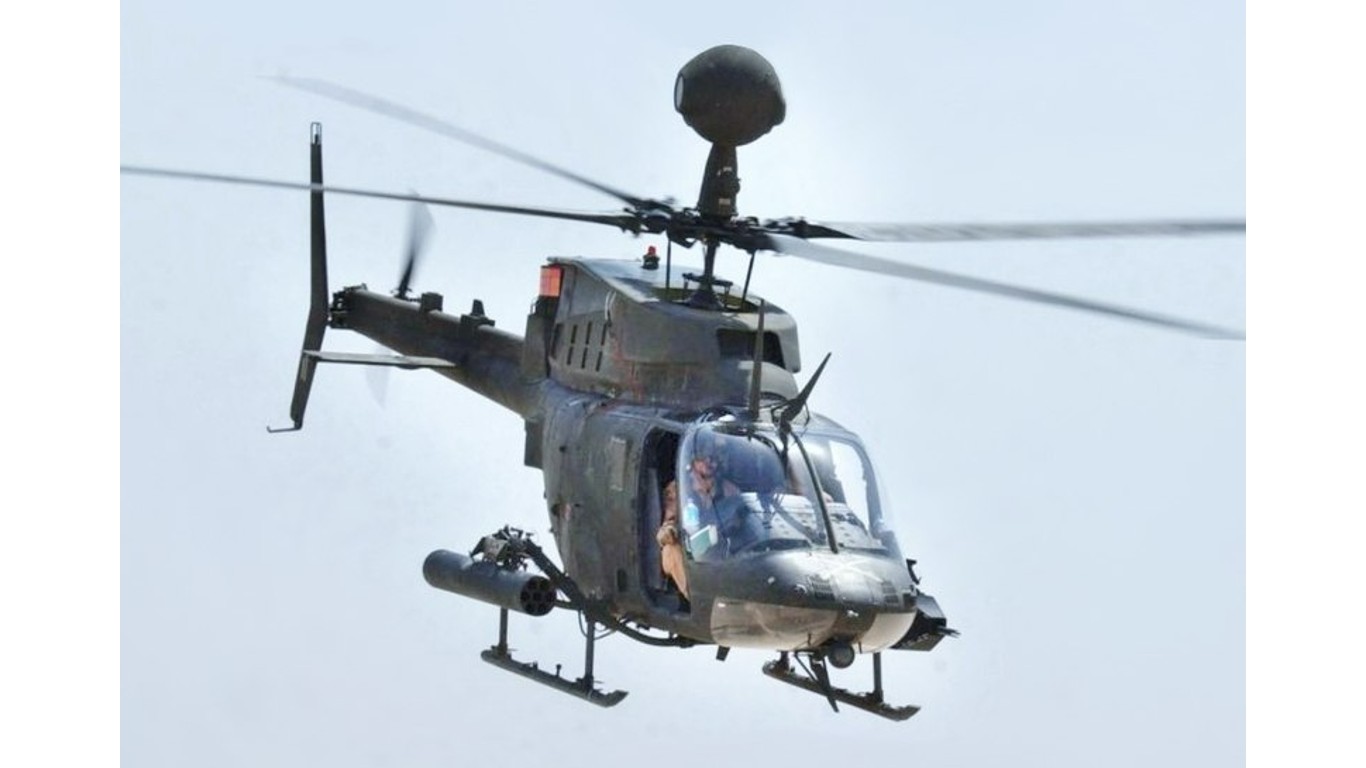
The Bell OH-58 Kiowa (used by the U.S.) was an armed scout and reconnaissance/light attack helicopter introduced in 1969 with 2,200 total units produced. Manufactured by Bell Helicopter Textron, it was outfitted with 7.62mm machine gun pods, 7.62mm minigun pods, 12.7mm machine gun pods, seven-round Hydra 70 rocket pods, AGM-114C Hellfire anti-tank missiles, and Stinger AAMs. The aircraft could reach a top speed of 131 miles per hour.
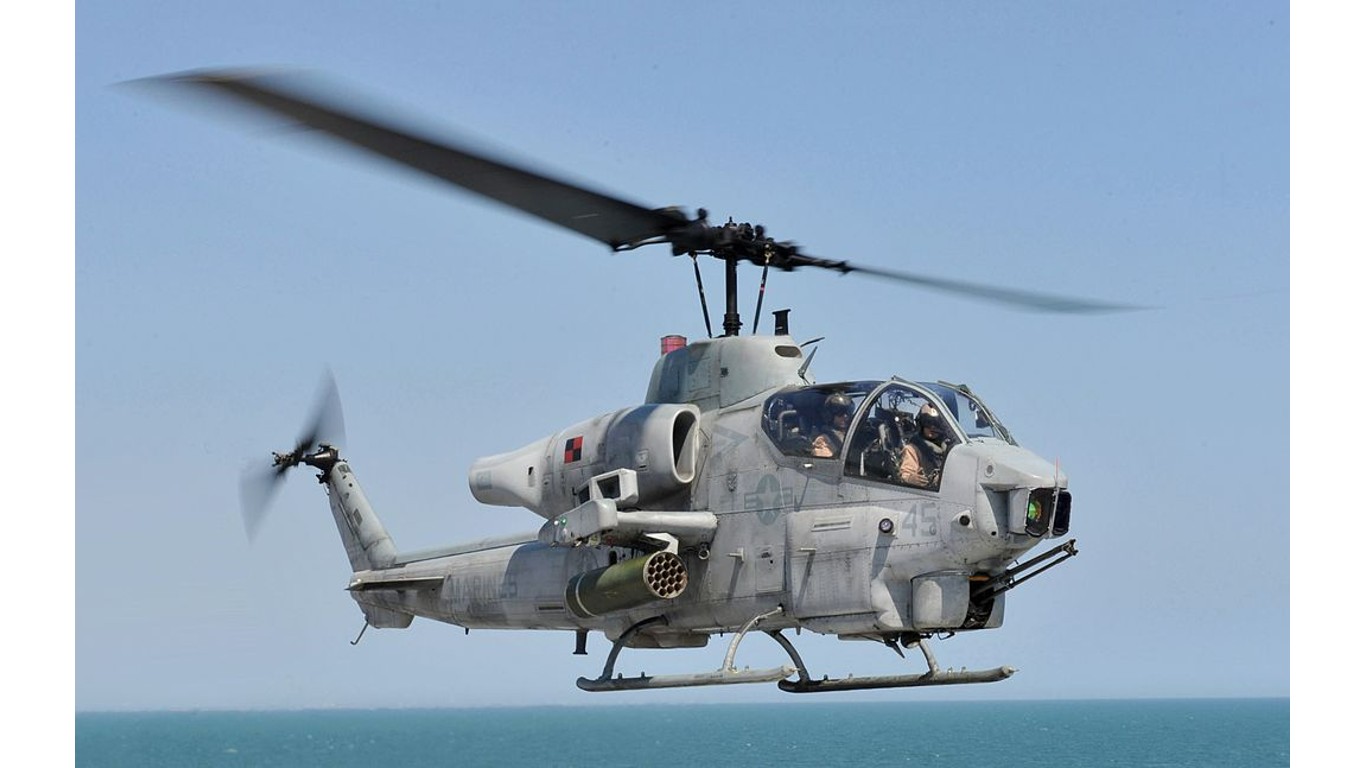
The Bell AH-1J SeaCobra (used by the U.S.) was a dedicated two-seat attack helicopter introduced in 1970 with 251 total units produced. Manufactured by Bell Helicopter Textron, it was outfitted with 20mm M197 triple-barrel Gatling-style gun, 2.75″ MK 40 / Hydra rocket pods, Hughes BGM-71A TOW anti-tank missiles, AIM-9M Sidewinder short-range air-to-air missiles, and Zuni rocket pods. The aircraft could reach a top speed of 175 miles per hour.
Finding a qualified financial advisor doesn’t have to be hard. SmartAsset’s free tool matches you with up to 3 fiduciary financial advisors in your area in 5 minutes. Each advisor has been vetted by SmartAsset and is held to a fiduciary standard to act in your best interests. If you’re ready to be matched with local advisors that can help you achieve your financial goals, get started now.
Thank you for reading! Have some feedback for us?
Contact the 24/7 Wall St. editorial team.